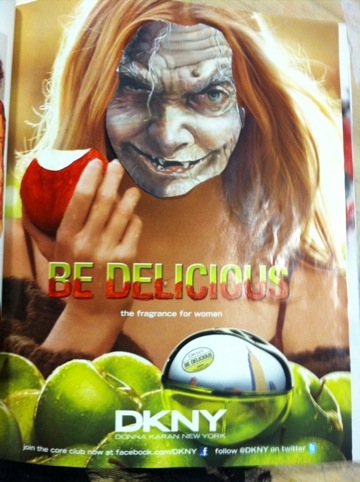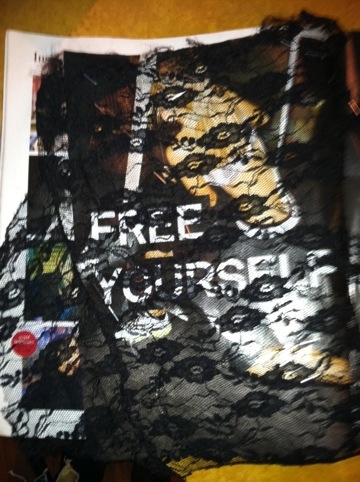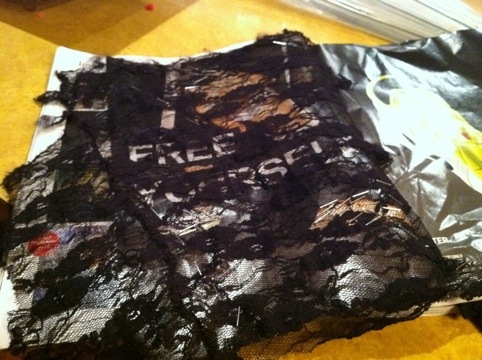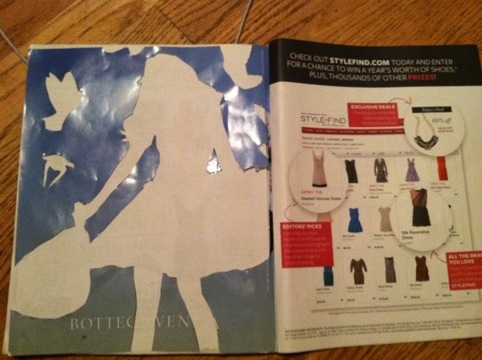Art Intervention
This technique involves interacting with a previously existing work, audience or space to express a position. This type of are is conceptual and many bring to attention the fine line between art intervention and vandalism. Art intervention pieces often challenge or comment on the theme or implications of the original work.
Artist
Art intervention can be seen in the work of El Crudo, an artist from from Valparaiso, Chile. In the example below, he took a painting of multiple childhood icons, including Ronald McDonald and Mickey Mouse, and destroyed the pictures of them. The text is translated as “shooting target/the childhood on attack” and speaks to the politics of Chilean society.
Book entry
To demonstrate this technique in my book, I chose to alter a perfume ad. The orinal DKNY add consisted of a beautiful blonde girl holding a green apple with a number of other green apples in the foreground of the photo along with the perfume bottle which is shaped like an apple. The text reads “BE DELICIOUS”. I found a photo of the wicked witch from Snow White and replace the beautiful face of the model with her evil, ugly face. I also painted the apple in her hand red like the poisonous apple in the movie “Snow White” and added red to the text. These alterations intended to portray the sometimes evil, poisonous nature of seduction and sexuality. This perfume is supposed to make women “delicious” and sexy but the contradiction of this haggard old woman’s face forces the audience to relate this perfume and the effect that it has to evil and danger (red).











